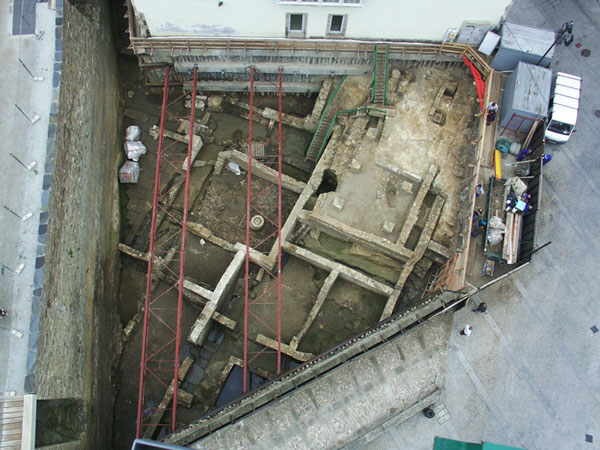
CIMRM Supplement - Mithraeum. Lugo, Spain.
A correspondent writes that this is a unique example of a man of such high social status mentioning someone socially inferior within an inscription of an altar.1
The mithraeum seems therefore to have been constructed at the beginning of the 3rd century and, to judge from the numismatic evidence, have continued in use as a religious centre for its community until the mid 4th century.2
Two inscriptions were found. The first is a rectangular block of granite of uncertain meaning.
The second text is inscribed on a granite altar (H. 93.5 cm, Br. 36.3 cm, D. 23.5 cm; letters are 4 cm high and the epigraphic field is 63.5 x 31.5 cms). The mention of "Antoninianae" as the epithet for the legion probably dates the monument to the reign of Caracalla, 212-218 A.D.
INVIC(to) MITHRAE C(aius) VICTORIVS VIC- TORINVS (Centurio) L(egionis) VII G(eminae) ANTONINIANAE P(iae) F(elicis) INHONOREM STA- TIONIS LVCENSIS ET VICTORIORVM SECVNDI ET VIC- TOR(is) LIB(ertorum) SVOR- VM ARAM PO- SVIT LIBENTI ANIMO (hedera)
Translation: "To the never-conquered god Mithras, C. Victorius Victorinus, centurion of the 7th Legion, Gemina, Antoniniana, Dutiful and Loyal, gladly erected (this) altar in honour of the Military Post of Lucus (Augusti) and of his two freedmen, Victorius Secundus and Victorius Victor."3
Coordinates: 43° 01' 40" N, 7° 33' 10" W / 43.0167° N, 7.5667° W 4
Bibliography
- J. Alvar, Richard Gordon, and C. Rodriguez, "The Mithraeum at Lugo (Lucus Augusti) and its Connection with Legio VII Gemina", in: Journal of Roman Archaeology 191, 2006, pp. 266-277. (First page here) See also excavation report here. (cached copy here).
- Luca Cappai, Testimonianze archeologiche della diffusione del culto mitraico nella Penisola Iberica, ArcheoArte. Rivista elettronica di Archeologia e Arte, 2012.
External links
| 1 | See the J.Alvar et al. article above in the [i]Journal of Roman Archaeology[/i] 2006, p. 275-276. |
| 2 | Celso Rodriguez and Jaime Alvar, Excavation report, p.1. |
| 3 | Celso Rodriguez and Jaime Alvar, Excavation report, p.2-3. |
| 4 | These were kindly supplied by John W. Brandt. |
| Tweet |



